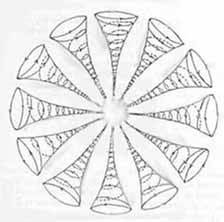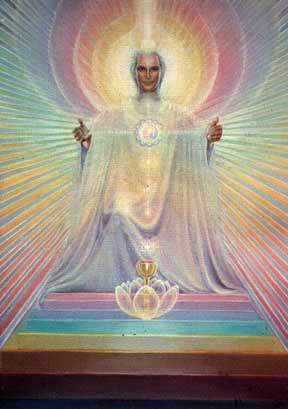

�Metatron (from Greek Meta+Tron meaning Beyond+Matrix.). Metatron is an angel in Judaism, some branches of Christianity and Islamic tradition Witchcraft. However, there are no references to him in the Jewish Tanakh (Old Testament), the Christian Scriptures (New Testament) or any Islamic source.
There is no consensus as to his genesis or the role that he plays in the hierarchy of Heaven and Hell. A mysterious figure, Metatron is identified with the term, "lesser YHVH" which is the Lesser Tetragrammaton - in a Talmudic version read by the Karaite scholar Kirkisani.
The word 'Metatron' is numerically equivalent to Shaddai according to Hebrew gematria, therefore he is said to have a "Name like his Master".
The Talmud records an incident with Elisha ben Abuya, also called Aher ("another"), who is said to have entered Paradise, and saw Metatron sitting down (an action in heaven that is permissible only to God Himself). Elisha ben Abuya therefore looked to Metatron as a Deity, and is reported to have said, "There are indeed two powers in heaven!"
The rabbis explain that Metatron was allowed to sit because of his function as the Heavenly Scribe, writing down the deeds of Israel, mush as Thoth was the Egyptian scribe.
According to one school of thought Enoch was taken by God and transformed into Metatron, explaining the mysterious passage "Enoch walked with God; then he was no more, because God took him away (Genesis 5:24 NIV). However, this viewpoint is not shared by many Talmudic authorities.
There may be two Metatrons, one spelled with six letters, and one spelled with seven. The former may be the transformed Enoch, while the latter is the Primordial Metatron.
The Zohar calls Metatron "the Youth", identifies him as the angel that led the people of Israel through the wilderness after their exodus from Egypt, and describes him as a heavenly priest.
Metatron is also mentioned in the Pseudepigrapha, most prominently in the Hebrew Book of Enoch (also called Third Enoch), in which his grand title, "the lesser YHVH" resurfaces. According to Johann Eisenmenger, Metatron transmits the daily orders of God to the angels Gabriel and Sammael. Metatron is often identified as being the twin brother to Sandalphon, who is said to have been the prophet Elijah.
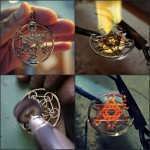
|
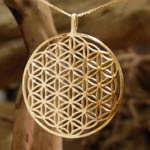
|
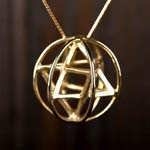
|
| Metatron Cube Pendant | The Flower of Life | The Merkaba |
|
David's work harnesses the power of spiritual symbols and sacred geometry from around the world to bring those wearing them health, happiness, vitality, abundance, excitement, and above all - love.
David's jewels are meticulously crafted to work on conscious and subconscious levels to inspire people's lives.
David's Work is based on
Sacred Geometry,
Kabbalah,
Astrology Talismans,
Buddhism and other ancient cultures.
|
||
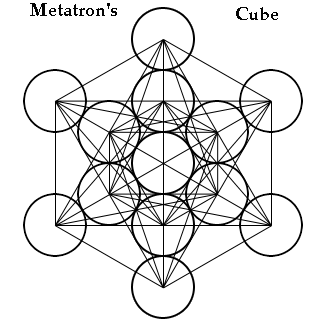
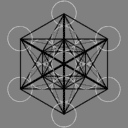
The Flower of Life has thirteen circles. [13=4=time] If each circle's center is considered a "node", and each node is connected to each other node with a single line, a total of seventy-eight lines are created. Within this cube, many other shapes can be found, including two-dimensionally flattened versions of the five platonic solids. In early kabbalist scriptures, Metatron supposedly forms the cube from his soul.
This Cube can later be seen in Christian art, where it appears on his chest or floating behind him. Metatron's cube is also considered a holy glyph, and was often drawn around an object or person to ward off demons and satanic powers.
This idea is also present in alchemy, in which the cube was favored as a containment circle or creation circle.
The simplest means of constructing Metatron's Cube is to begin with a cube flattened along a diagonal that passes through its center, such that it becomes a 2D figure, equivalent to a regular hexagon divided via its own diagonals into six equilateral triangles. The vertices of this 2D figure are then connected with additional lines. Several steps later, the full Metatron's Cube figure is formed.
Metaphysics: One needs to understand the metaphoric content of this geometric design to understand Metatron and the electromagnetic nature of the creational of our reality. Metatron's Latin name is 'Metator' - A guide or measurer As in 'Creational Geometry' - or 'Metaphor'. Some say he is an Archangel as in 'Arcs or Angles of Geometry.
This was also attributed to Thoth. 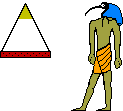

The Metatron is a reference to the highest archangel of the Kabbalah at Kether or the crown. Metatron is also sometimes equated with Thoth or Hermes, author of the Emerald Tablets of Thoth - As is Above, So is Below - the merge of polarities at Zero Point. More properly, it should be associated with the supreme Egyptian god Ptah, also known as the Opener.
The wheel you refer to combines the symbology of Kabbalah with the Tarot cards and the 22 paths in the Tree of Life. The image is of an 8-spoked wheel with the secret vowels of the Tetragammaton (name of god) and the letters ROTA, which means Wheel - however if you transpose the letters it spells "TARO". There are other esoteric symbols relating to the elements and processes involved. You should be able to find this image in books or websites dealing with the Tarot. The connections between Alchemy and the Qabbalah are among the deepest mysteries, and are gone into a later stage in the course. List Of Alternate Names
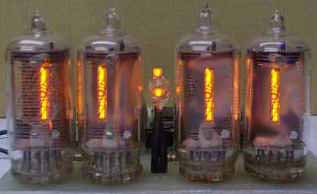
11:11
